Cider remains a success story for c-stores, and a succession of new flavours and fruit combinations is continuing to fuel consumer demand
‘Sun’s out, cider’s out’ should be the rallying cry of retailers ready to make the most of the apple and pear-infused category this summer. The UK’s £3bn cider sector has grown 2.4% in value in the past year, a fact which has seen it hailed as the biggest cider market in the world (South Africa is the second).
Currently, UK consumers get through 800 million litres of the stuff every year. That’s enough to fill more than five million bath tubs. And for 2018, consumers will be looking to their local c-stores to turn on the taps.
In fact, the latest stats show that cider is a market in which convenience beats the supermarkets hands down. The mults now represent 47.5% of total cider sales, falling from 48.5% a year ago. In contrast, convenience store cider sales have increased 7.3% to £555.6m, making impulse the clear winner with a 49.4% sales share.
Steph Latham from Spar Lostock Hall in Preston, Lancashire, says that cider is a central part of her alcohol offer. Plus, she’s partial to enjoying the odd bottle herself at home as well.
“Cider’s definitely my thing,” she says. “When the sun comes out it just flies out the shop door. The Kopparberg strawberry & lime did really well when it was last hot, and I absolutely love the fruitiness of it. I’ve always got some in the fridge at home.”
Steph’s not alone in focusing on flavoured varieties. Of all the retailers C-Store quizzed for this feature, one thing was crystal clear: c-store shoppers are big fans of flavoured/fruit cider. With this kind of demand it’s no wonder that it makes up a 27% share of all cider sold. So, if the trend doesn’t sour, that means it will account for almost half of all ciders drunk in the UK by 2023 (Westons Cider Report 2018).
“Flavoured cider is absolutely massive for us,” says Anita Nye from Premier Eldred Drive Stores in Orpington, Kent.
“It was huge last year and shows no sign of stopping in 2018. We do all the big brands, such as Rekorderlig and Brothers, and it’s the flavours that customers want at the moment.”
Premium performers
When it comes to choosing a cider brand, authenticity matters. Consumers looking for a bottle or can will be considering the story behind the drink, as well as its taste.
This all points to the increasing trend for premium picks.
“With the cider sector, we’ve been seeing a move towards premiumisation, and this will continue throughout 2018,” explains Thatchers Cider head of off-trade James Kennedy.
“Consumers are prepared to spend more to enjoy a high-quality, premium cider such as Thatchers that demonstrates strong and genuine values of heritage, provenance, and where the focus is firmly on quality and taste.”
David Sheppy, from Sheppy’s Cider, concurs that switched-on shoppers want to understand more about how their cider is made.
“Drinkers are looking for cider that has been handcrafted by experts, with a rich heritage,” he says.
“Some 49% of cider drinkers list ‘made by a skilled brewer’ in their top two factors when choosing cider, and 44% are interested in the provenance of their cider.”
The brand is also using the craft-friendly 330ml can to signal quality, with the launch of two ciders, VAT 07 and VAT 14, in this fast-growing format.
Cater for the in-crowd
According to Anita, the amount of people who choose to drink cider at home while watching the big match, or hanging out with friends, is a big driver. The up-coming World Cup should help massively amplify this effect, too.
“It’s a big-seller with the stay-at-home crowd,” she says. “It’s people who don’t necessarily want to go out to the pub, but don’t mind sitting in their garden in the sun with a can of cider.”
The barbecue season should be a smart opportunity for retailers to cross-merchandise food and cider to meet this Big Afternoon In market. Some 67% of home cider serves now feature food (Westons Cider Report 2018), so there’s scope to site sharing-size crisps and even burger buns next to the chiller to maximise sales.
Meanwhile, cider might be a drink with a long and celebrated heritage, but Steph says that it’s the younger crowd who are currently boosting its sales in her store.
“The people who buy the flavoured cider tend to be customers under 40, maybe more the under-30s,” she says.
“I think the younger people tend to like the flavoured stuff, while the older generation buy the stronger, more traditional ciders, so they’re both worth stocking.
“I also think that cider is reflecting what’s going on in spirits right now, where you’re seeing a lot of fruity gins on the shelves. It’s all about customers going for the added flavour, rather than it being about the actual brand of cider, gin, vodka or whatever.”
Steph says that, like many of her customers, she particularly enjoys seeing what new flavours cider manufacturers are going to come up with next.
“I like to keep a close eye on what’s coming out,” she says. “It’s always the same process: we’ll try something out (especially if it’s on a deal) and then if it works we’ll swap it out with something else. At the moment I really like the Kopparberg elderflower & lime, which you don’t see much of up here [in Lancashire]. I love it.”
Is your range sweet enough already?
While sweet stuff such as flavoured cider is providing the category with a sales surge, drier varieties are also worthy of a space on your shelves.
Cider’s dry flavour is often used to flag up provenance, since the dryness develops because of the tannins present in home-grown apple varieties.
New to the cider club this season is Cornish Orchards Dry Cider. It’s made with three apple varieties – Harry Masters Jersey, Dabinet and Michelin – to deliver a traditional West Country cider character.
“We’re really excited about this new product,” says Patrick Gardner, general manager at Cornish Orchards.
“We looked at typical draught cider ranges available and noticed there was a definite gap in the market for a drier, less-sweet option. Dry Cider is perfect for the drinkers who are looking to move away from the sweet ciders that currently dominate the market.”
For Richard Inglis, owner of three Co-op stores around Southampton, the cider market has evolved hugely over the past decade. And he’s seen how it’s happened from his vantage point at the counter.
“Cider’s changed massively,” he says. “It used to be about your traditional white ciders, then over the past few years it’s just all blown up. So you’ve now got all these specialist flavours,Stella Artois is getting into it, and everyone’s now launching their own ciders.
“A while back cider used to be a very small category for us in terms of space on our shelves. We used to have the Strongbow cans, a few large bottles, and that would be it. To be honest, it used to attract ‘the wrong sort of people’, if you see what I mean. So we stayed away from the high-strength plastic stuff and just kept it simple.”
Richard says that he’s seen how cider has become a trendy drink. This has been reflected by the growing amount of stock he has on the shopfloor. However, he does add that although there’s been growth, the sheer amount of skus means the increased volume is split between lots of different products.
“In terms of our beer chiller, which is in three bays, one bay is now entirely cider,” he says.
“At the end of the day, this means it’s not quite as big for us as beer, but it really justifies the space.”
Fruit-full fixtures
There’s one sector that’s still driving a coach and horses through the rest of the c-store cider category: flavoured cider. Westons Cider Report 2018 says that it’s grown a massive 338% in the past 12 years.
It’s a surge that’s certainly buoyed sales of Brothers Cider.
“Fruit cider continues to perform well within the convenience sector, with premium mainstream fruit ciders such as Brothers Cider experiencing 7.2% value growth and 4% volume growth versus last year,” says Gerry Doyle, marketing manager at Brothers Cider.
With the category well-established, the challenge now is to keep excitement levels high with fresh tastes and flavours.
It’s with this aim in mind that Brothers has brought back its distinctive Rhubarb & Custard Cider this summer, to selected Londis and Budgens stores.
Cider-drinking is skewed towards a younger crowd, peaking with under-35s who make up 68% of consumption (Mintel). Doyle says that innovation is crucial to reach these fickle and promiscuous customers.
“Continued innovation within the cider market is vital to drive penetration and bring new drinkers into cider,” he says.
“Millennials are key cider consumers, and we know that they like to experiment and try new drinks. NPD is key to continued engagement with cider’s core consumers.”
Spot gaps in the market
In a large and ever-growing category, Richard maintains that success is about looking for gaps in the market. So, if strawberry-flavoured cider is already there then he’ll seek out raspberry, or something different to slake shoppers’ thirsts.
Richard says that at the moment there’s more space for ciders that fit somewhere between the upmarket flavoured ranges and more traditional apple ciders. This is where Strongbow Dark Fruit hits the mark for him. “Strongbow Dark Fruit is one of our strongest lines,” he says. “It’s basically a halfway house between a traditional cider and fancy cider. It’s always interesting to see what sells. White cider always used to be seen as a student drink, but today’s students are actually much more adventurous.
“For instance, at our student hall store it’s Kopparberg strawberry & lime that’s the best-seller. At our station store, though, it’s Original Magners.”
When it comes to selling cider effectively, retailers agree that the key is to keep it nice and cold. Stacks on the shopfloor may be eye-catching, especially when there’s a good deal on, yet consumers seem to value a chilled drinking experience much more.
“I think that cider straight out of the fridge is a must – it’s just something that people seem to want,” says Steph.
“We have the mixed 10-packs of Kopparberg on promotion. We had big stacks of them around the store to make them stand out. But we’ve recently moved them to the fridges, where they sell so much better.”
Richard takes a more nuanced view, with a mix of both approaches. He says that stocking a wide selection of best-sellers is the best idea, and warns against going crazy and feeling that retailers have to have everything.
“The chillers have to look well-stocked,” he says. “We make sure that there’s decent facings for everything we do. That means a case per shelf of cider, and two for the very best-sellers.”
Low- and no-alcohol builds a growing appeal
A few years ago, if a retailer predicted that Brits would moderate their taste for booze you’d probably have said they were bonkers. But public demand for low- and no-alcohol beer from the big brewers means that independents have begun to take notice.
So after the success of booze-free beer, could cider be the next category to benefit? Cider brands seem to think so.
“Low- and no-alcohol products are rising in credibility and acceptance,” explains Matthew Langley, insight and innovation manager at Westons Cider.
“[They’re] now seen by consumers as a positive choice based on taste, flavour and experience rather than just having to choose something when ‘you’re not drinking’.”
Westons is busy tapping into the ongoing trend with its Stowford Press Low Alcohol cider. It’s currently worth £411,027 a year in the UK off-trade, with plenty of potential for growth.
Heineken is also part of the move to establish low-alcohol cider as a healthy choice for customers. Low alcohol is the main draw – although some of the low-alcohol options appeal to people who want a lower calorie count, too.
“With an 18% sales value rise [Nielsen] in the low- and gluten-free alcohol segment, independents should look to stock a range that resonates with health-conscious shoppers who are keen to live better without compromising on taste,” says Toby Lancaster, category and shopper marketing director for Heineken UK.
“Stocking Old Mout No Alcohol, launched this year, provides an alternative for the health-conscious consumer looking for something low-calorie and alcohol-free without compromising on taste.”
As far as formats go, 48% of the UK’s cider is sold in cans, with 35% in glass bottles.
Research shows that consumers appear to be turning away from cider in plastic bottles for more premium formats – the former now make up just 15% of the sector, and are in decline.
Conversely, canned cider sales are up 5% year on year, which might be partly due to the current fashion for craft-style 330ml units, or due to shoppers’ increasingly on-the-go lifestyles which have led to an increased interest in RTDs (growing 7.8% year on year in value within the impulse channel, Nielsen Premix 24 March 2018).
The can format has become synonymous with the quality-over-quantity craft beer market, and Mintel says that it might also chime with today’s less-is-more-healthy lifestyles.
Richard has certainly seen success with the smaller format, which isn’t necessarily a usual c-store staple.
“We do the 330ml cans across a lot of different alcohol, not just cider,” he explains.
“It’s a big hit with people who don’t want to pre-drink massively before going out. We see the best sales at our station store. We find that people might want to have a drink on the way home, without getting a four-pack of cider.”
Also on the packaging front, waste plastic has been a growing concern for many consumers, and the cider category is no different.
This year Thatchers has developed and introduced new recyclable cardboard packs for its four-can collection of Thatchers Gold and Thatchers Haze. This means phasing out plastic ring carriers, a big step towards reducing waste.
“We’re determined to be doing things the right way for the environment,” says Thatchers managing director Martin Thatcher.
“Although we know there’s more to do, we are well on our way down this road of reducing our use of plastic.”
With cider such a well-populated category, it can be difficult to see where new products are going to fuel growth beyond fresh flavours. One possible route might be doubling down on the growing desire for low- or no-alcohol options.
Stats show that 27% of young people are teetotal, up six percentage points from a decade ago. The proportion of tee-totallers tends to be concentrated around urban areas such as London and Birmingham. Alcohol-free beer is booming in the wider market, so is there room for more similarly-brewed ciders, too?
“It’s possible,” says Richard, “although when you look at low-alcohol beers it’s still a very small proportion of our beer sales. Also, there’s such a lot of different flavours in cider. So do you make room for alcohol-free red berries, lime and all the rest?
“It also might be difficult to convince consumers that it’s not just an upmarket fruit juice.”
One opportunity that retailers might currently be missing is tapping into the provenance trend by stocking local cider. For many c-stores interest has yet to be translated into sales.
“It’s an interesting one,” says Richard. “We definitely stock a selection of local ales for customers, but we don’t have the local ciders.
“To be honest, in cider we tend to stick to the same brands. I have a feeling that local cider doesn’t have quite the same resonance with shoppers as local beer.”
Matt Hutchinson, manager of Select Convenience in Sheffield, prides himself on stocking a raft of locally-produced products in his store. Yet he says that local cider isn’t yet among them.
“It’s definitely something that we’d look at if the right people came along,” he says.
“At the moment, we just stock a couple of the biggest brands. Our customers come from an affluent area that tends to prefer drinking wine. However, I reckon that the appeal of something local could attract people, and help beat the slightly downbeat image of cider that some of them have.
“Customers today want to know where their food and drink are coming from, so local cider certainly makes sense if you can source it at the right price.”
Seasoned cider-watchers will have seen how the drink is now getting so successful that for the past couple of years brands known for other categories have launched products with cross-over appeal. C-store regulars include Smirnoff Cider, Jack Daniel’s Tennessee Cider and Stella Cidre.
“I think it’s been effective,” says Anita. “At our store, the Jack Daniel’s Cider does well for us. I think that people trust that it is a well-known brand. And I also think that people always want something different when they come in and buy alcohol.”
Whichever brands get involved in the category, cider’s biggest association has always been with sun. However, the brewers’ Holy Grail would be establishing it as a drink that sells well in autumn and winter, too. And according to Mintel, that’s already starting to happen.
The market analysts note that although sunshine always boosts cider sales, the explosion in flavours, and investment in seasonal variants, mean that it has the potential to go great guns across the calendar.
Anita agrees that cider definitely has a shelflife longer than summer on the shopfloor.
She says: “I really don’t think that it’s just a summer drink anymore. Okay, it always does well when the weather’s good, but it’s become year-round for us. I think that it’s just got that sweeter taste than lager which always gives it more appeal. Women tend to buy it, too, which extends the market.”
Promotions also have their place in keeping customers cider-focused for longer, retailers report. Steph says that her store normally has a deal on cider, usually three for £5.50 on big sellers such as Westons, Kopparberg and Rekorderlig.
For Steph, there’s also another motivator for buying cider. “What’s great is that whatever the time of year the taste takes you back to summer. The hot weather, barbecues – all the good stuff! It doesn’t have to be warm to drink.”
A barrel of statistics
Three-quarters (76%) of buyers would like ciders to be grouped in-store by their flavour profile.
Half (52%) of UK adults drink some type of cider.
The biggest cider consumers are under-35s.
Cider is more likely to be drunk at home (73%) than in pubs or bars (57%).
Brand loyalty in cider is low. Only 18% of consumers stick to the same brand, compared with 38% who switch between brands.

















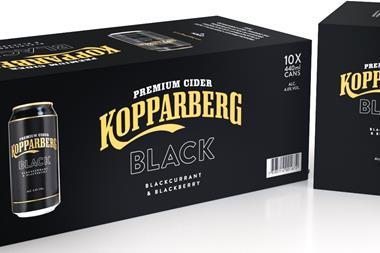

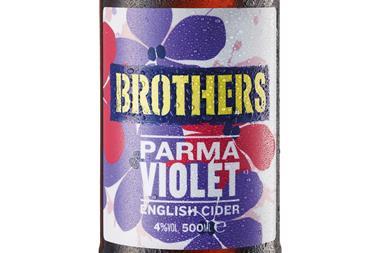
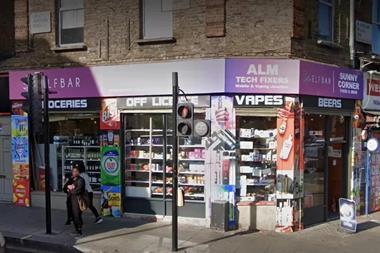
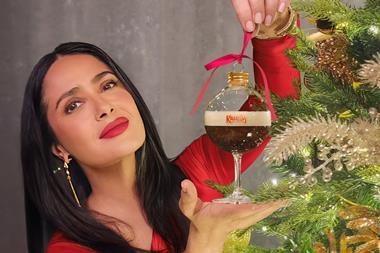
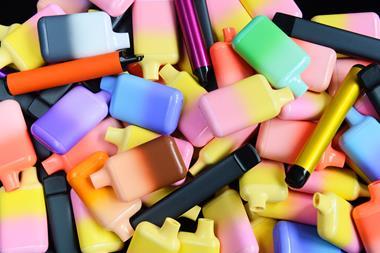





No comments yet